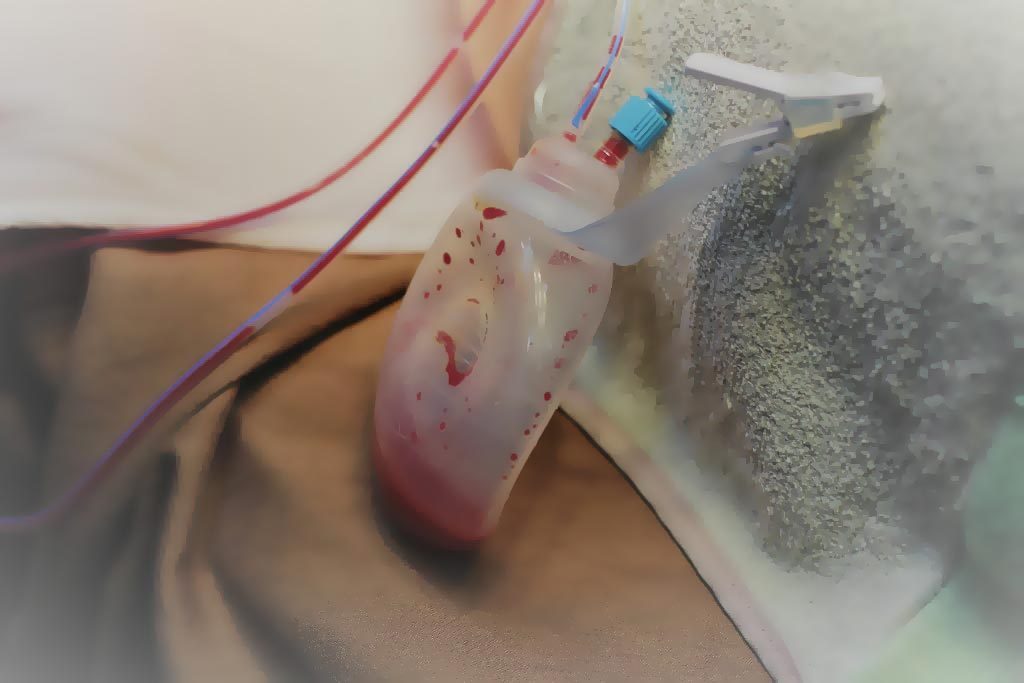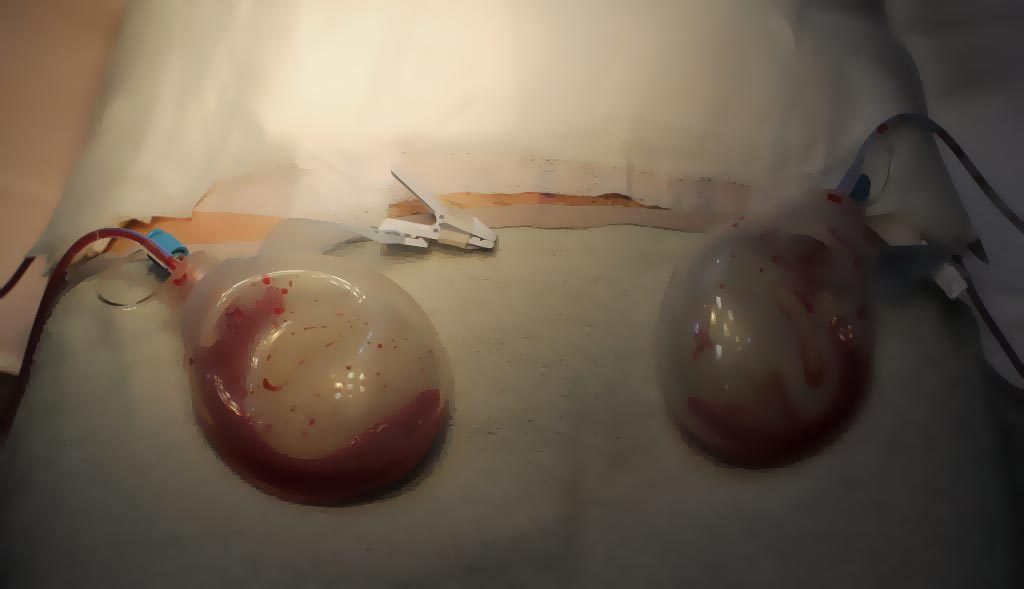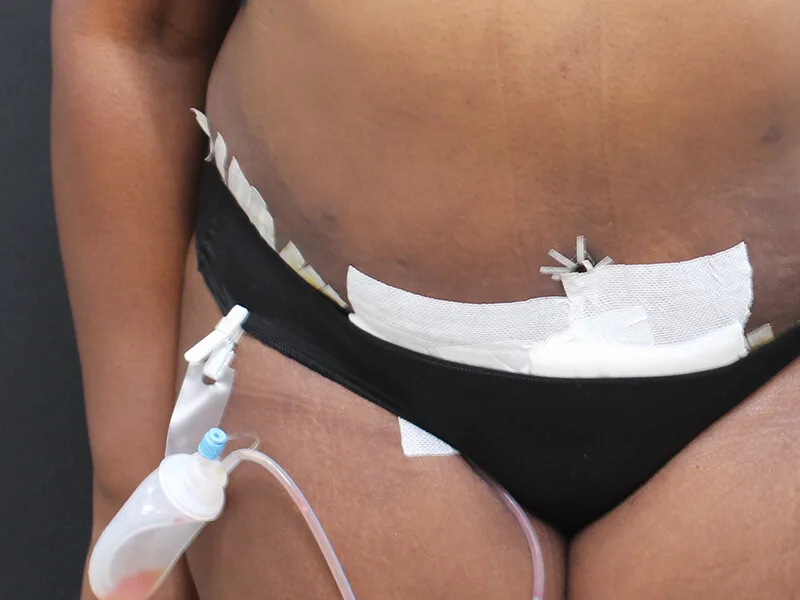Understanding Your Surgical Drain After Surgery at Evita Clinic
If you’re preparing for surgery at Evita Clinic, you might be told a surgical drain will be placed during your procedure. You might wonder, « What is a surgical drain, and why do I need one? » This guide explains the purpose and care of surgical drains to help you feel informed and comfortable.
What is a Surgical Drain and Why is it Used?

A surgical drain is typically a soft, clear tube connected to a small collection bulb. It’s carefully placed under your skin near the surgical site by your surgeon.
At Evita Clinic, we often use drains for procedures like Tummy Tucks, Gynecomastia surgery, TOP surgery and various Breast surgeries. The primary reason for using a drain after surgery is to help your recovery. It works by gently removing fluids (like blood or serous fluid) that can naturally collect in the operated area. Preventing this fluid build-up helps to:
- Reduce swelling and bruising
- Lower the risk of infection (like seroma formation)
- Promote faster healing and a smoother recovery
How to Care for Your Surgical Drain
Your surgeon may place one or two drains depending on your specific surgery. Proper drain care is essential. You’ll need to empty the collection bulb a few times each day:
- Prepare: Wash your hands thoroughly.
- Open: Carefully open the plug or lid on the collection bulb.
- Empty: Pour the collected fluid into the toilet.
- Squeeze: Squeeze the bulb flat to remove all the air.
- Close: While keeping the bulb squeezed, close the plug or lid tightly. This creates the gentle negative pressure (suction) needed to draw fluid away from the surgical site.
- Record: It’s very important to measure and record the amount of fluid you empty each time. You’ll likely be given a chart for this. Our nurses and your surgeon will review these amounts during your follow-up visits at the clinic.
What to Expect: Duration and Removal
The length of time you’ll need the drain varies. For example, after a Tummy Tuck, patients typically have the drain for 3 to 5 days.
Your surgeon will decide when to remove the drain based on the amount of fluid being collected. Generally, drain removal is considered when the total fluid collected over a 24-hour period is less than 30cc (cubic centimeters).
The removal process is quick, usually taking only a minute. Your surgeon will gently pull the tube out. You might feel a brief pulling sensation or some discomfort, but most patients find it very manageable, often rating the discomfort level low (around a 2 out of 10).

Comfort and Safety
While wearing a drain for a few days might feel a bit awkward, it’s typically not painful. Don’t worry about it accidentally falling out; your surgeon secures it in place with a stitch.
For hygiene and proper function, simply make sure to clip the collection bulb to your clothing below the level of your incision site. This prevents fluid from flowing back towards the incision.
In Summary

Although it’s a temporary addition, your surgical drain is a valuable tool used at Evita Clinic to support optimal healing after your Tummy Tuck, Gynecomastia, Breast surgery or TOP surgery. Following the simple care instructions helps ensure a smoother, faster recovery. If you have any questions about your drain, please don’t hesitate to ask our clinical team.
